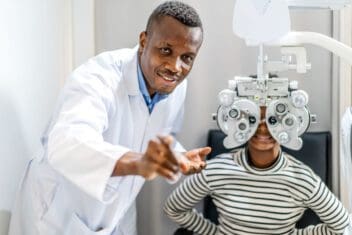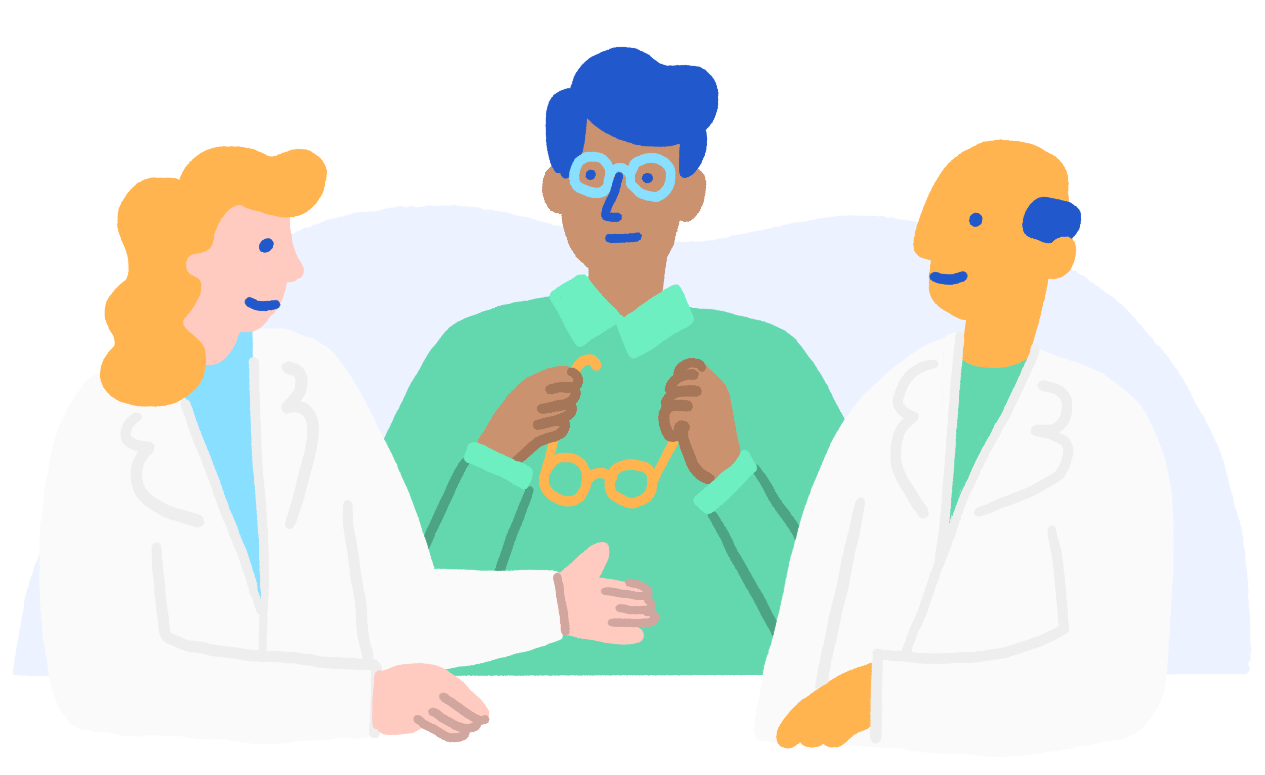Locate a Caring Eye Doctor Optometrist in Riverside for Your Family
The Comprehensive Eye Exam: What to Anticipate Throughout Your Visit to the Eye Physician
A visit to the eye physician for a thorough eye exam is more than a regular examination; it is a crucial action in protecting your visual wellness. What exactly occurs during the eye health and wellness assessment, and how does it affect the prescription process?
Initial Examination
The initial consultation throughout an eye exam works as an essential structure for recognizing an individual's aesthetic health and wellness demands. This phase establishes the tone for the whole assessment procedure, allowing the eye doctor to gather necessary details about the individual's medical history, lifestyle, and specific vision concerns. By thoroughly assessing any type of pre-existing conditions, medicines, or previous surgical procedures, the eye treatment expert can tailor the assessment to deal with specific needs successfully.

Moreover, the preliminary examination is a chance for clients to voice any inquiries or problems, cultivating a collaborative connection with their health care supplier. This communication not just makes certain that the individual feels informed and comfy yet also encourages them to take part actively in their eye wellness management. Jointly, these discussions enable the eye doctor to devise a customized evaluation plan, ensuring ideal care and precise diagnosis.
Visual Acuity Examination
Kicking off the core parts of an eye evaluation, the visual skill examination is designed to examine the sharpness and clearness of a client's vision. This essential examination aids identify how well an individual can determine letters or symbols at a standardized range, typically making use of a Snellen graph (Opticore Optometry). The chart makes up rows of letters that lower in dimension from top to base, with the individual placed at a popular range of 20 feet
Throughout the examination, the individual is asked to cover one eye and read out loud the smallest line of letters they can see plainly. This process is duplicated for the various other eye. The results are videotaped as a fraction, with 20/20 vision suggesting typical aesthetic skill-- where the person can see at 20 feet what an individual with typical vision can see at that range.
The visual skill test likewise identifies prospective refractive errors such as astigmatism, hyperopia, or myopia, which may necessitate corrective lenses. By establishing a baseline of visual performance, the examination is a vital diagnostic tool that aids the eye care professional in establishing an appropriate therapy plan tailored to the individual's distinct visual demands.
Eye Health And Wellness Analysis
Adhering to the aesthetic skill test, a detailed eye health and wellness analysis is performed to make certain the total well-being of the eyes. This essential sector of the eye examination entails an extensive assessment of both the external and inner structures of the eye. The eye doctor or eye doctor begins by checking out the eyelids, cornea, conjunctiva, and sclera for any type of indications of infection, inflammation, or irregularities. Utilizing customized devices like a slit lamp, the professional gains an amplified view of the eye's anatomy, allowing comprehensive evaluation.
Following, focus changes to the internal structures. Through using ophthalmoscopy or fundus digital photography, the retina, optic nerve, and capillary are carefully evaluated. This action is vital for determining conditions such as retinal detachment, glaucoma, or diabetic retinopathy. In a lot of cases, pupil extension is performed to enhance exposure of the internal eye structures, although this might lead to temporary light sensitivity for Visit Your URL the individual.
Additionally, intraocular pressure is determined to screen for glaucoma threat. This is typically done utilizing tonometry, which can detect raised stress degrees that might suggest potential damage to the optic nerve. Collectively, these analyses develop an extensive evaluation to maintain eye health.
Refraction and Prescription
Refraction is an innovative treatment performed by eye care specialists to establish the exact lens power needed to remedy refractive mistakes such as nearsightedness, hyperopia, presbyopia, and astigmatism. The goal of this treatment is to assess how light bends as it passes via the eye, enabling the practitioner to establish whether rehabilitative lenses are needed for improved aesthetic skill.
During the refraction process, the individual is asked to browse a phoropter, a tool which contains numerous lenses. The specialist will methodically alter these lenses and ask the client to compare clearness between alternatives up until the best feasible vision is attained. This procedure is crucial in crafting an exact prescription that specifies the proper lens power for spectacles or get in touch with lenses.
The prescription derived from this procedure not just optimizes vision yet likewise offers as a foundation for choosing suitable rehabilitative eyewear. It is crucial to make sure that prescriptions are on a regular basis updated, as changes in vision can happen with time, stressing the value of regular eye examinations. This precise attention to information aids maintain clear, comfortable vision in every day life.
Follow-Up Referrals

During a follow-up visit, the eye medical professional will perform a series of tests to assess visual skill and look for any kind of modifications in vision that may necessitate an update to the prescription. Additionally, the follow-up offers an opportunity to review any type of pain or issues experienced with existing eyewear. Changes can be made to make certain convenience and effectiveness, whether through lens modification or structure adjustments.
For clients with ongoing problems such as glaucoma, diabetes-related eye problems, or macular deterioration, even more frequent follow-ups might my latest blog post be needed. These appointments are important for handling and possibly slowing down the development of eye illness. Abiding by these referrals can substantially add to preserving visual health and preventing long-lasting complications.
Verdict
The extensive eye examination is an important process for maintaining aesthetic wellness, incorporating a detailed assessment of clinical background and vision problems. Trick parts consist of the visual skill test, which assesses eyesight quality, and the eye wellness assessment, which analyzes the overall condition of the eyes.
A visit to the eye doctor for an extensive eye examination is more than a routine examination; it is an essential step in safeguarding your aesthetic wellness.Kicking off the core components of an eye assessment, the visual acuity examination is created to analyze the sharpness and clarity of a person's vision.Complying with the visual acuity test, a comprehensive eye health assessment is conducted to guarantee the overall well-being of the eyes. These gos to allow the eye treatment expert to monitor modifications in vision, update prescriptions, and evaluate the total wellness of the eyes. Secret components consist of the aesthetic acuity examination, which examines eyesight clearness, and the eye health and wellness assessment, which checks out the general condition of the eyes.